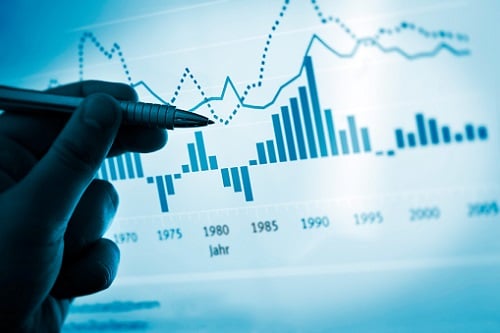A recent study has revealed that passive funds hold wide appeal

Results from a recent study by a global research firm indicate continued investor demand for low-cost mutual funds and ETFs, which are typically passive funds and institutional share classes.
In a survey of open-end mutual funds and exchange-traded funds, Morningstar found they had an asset-weighted average expense ratio of 0.57% in 2016, down from 0.61% in 2015 and 0.65% the year before that. This was due to increased investor demand for lower-cost funds, mainly passive funds and institutional share classes that charge less in fees.
The asset-weighted average expense ratio was used in the study rather than a simple average. According to the firm, an asset-weighted average could better reflect average costs borne by investors, since a simple average could be skewed by a few high-cost funds with low asset levels. “In 2016, the simple average expense ratio for all funds was 1.14%, but funds with an expense ratio above that level held less than 10% of fund assets at the end of 2016,” the study’s authors said. “So it is very misleading when a fund company touts ‘below-average fees.’”
The firm also found that on average, the largest 2,000 funds in 2013— which accounted for 85% of mutual-fund and ETF assets at the time — did not change their expense ratios over the three-year period. This means the decline in average fund fees that investors paid was due largely to switches to lower funds.
The figures indicate that passive funds hold wide appeal. In 2016, they cost investors an average of 0.17% — 58 basis points less than active funds. From the fund providers’ perspective, passive funds are also cheaper: their asset-weighted costs decline more rapidly than those for active funds. This two-pronged advantage has led to passive funds’ having larger inflows than their active counterparts for the past six calendar years.
Investors’ general appetite for lower fees has affected preferences within the active segment. Past interest in pricier funds has waned in recent years; expensive active funds saw US$91 billion in outflows in 2014, and US$369 billion in outflows in 2016. The rush out of expensive funds accounted for all the outflows from active funds over the past two years.
On the passive side, the preference for low fees is also evident. The funds with fees in the cheapest 20% tended to gather almost all passive-fund inflows. The trend was found to hold across US equities, international equities, and fixed income — the three largest asset class groups. Vanguard and BlackRock/iShares, both firms with a broad offering of low-fee passive funds, were the only two firms to really benefit from the rapid growth in passive funds.
For more of Wealth Professional's latest industry news, click here.
Related stories:
Self-directed investors still charged for advice
Advisor: Why I support the ban on embedded fees
In a survey of open-end mutual funds and exchange-traded funds, Morningstar found they had an asset-weighted average expense ratio of 0.57% in 2016, down from 0.61% in 2015 and 0.65% the year before that. This was due to increased investor demand for lower-cost funds, mainly passive funds and institutional share classes that charge less in fees.
The asset-weighted average expense ratio was used in the study rather than a simple average. According to the firm, an asset-weighted average could better reflect average costs borne by investors, since a simple average could be skewed by a few high-cost funds with low asset levels. “In 2016, the simple average expense ratio for all funds was 1.14%, but funds with an expense ratio above that level held less than 10% of fund assets at the end of 2016,” the study’s authors said. “So it is very misleading when a fund company touts ‘below-average fees.’”
The firm also found that on average, the largest 2,000 funds in 2013— which accounted for 85% of mutual-fund and ETF assets at the time — did not change their expense ratios over the three-year period. This means the decline in average fund fees that investors paid was due largely to switches to lower funds.
The figures indicate that passive funds hold wide appeal. In 2016, they cost investors an average of 0.17% — 58 basis points less than active funds. From the fund providers’ perspective, passive funds are also cheaper: their asset-weighted costs decline more rapidly than those for active funds. This two-pronged advantage has led to passive funds’ having larger inflows than their active counterparts for the past six calendar years.
Investors’ general appetite for lower fees has affected preferences within the active segment. Past interest in pricier funds has waned in recent years; expensive active funds saw US$91 billion in outflows in 2014, and US$369 billion in outflows in 2016. The rush out of expensive funds accounted for all the outflows from active funds over the past two years.
On the passive side, the preference for low fees is also evident. The funds with fees in the cheapest 20% tended to gather almost all passive-fund inflows. The trend was found to hold across US equities, international equities, and fixed income — the three largest asset class groups. Vanguard and BlackRock/iShares, both firms with a broad offering of low-fee passive funds, were the only two firms to really benefit from the rapid growth in passive funds.
For more of Wealth Professional's latest industry news, click here.
Related stories:
Self-directed investors still charged for advice
Advisor: Why I support the ban on embedded fees



